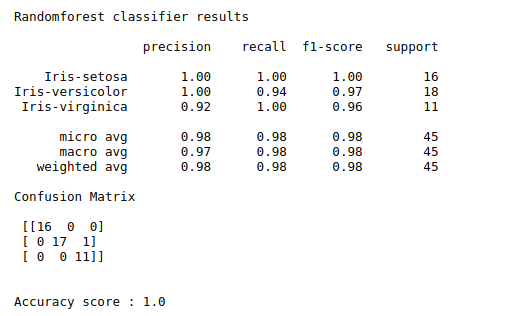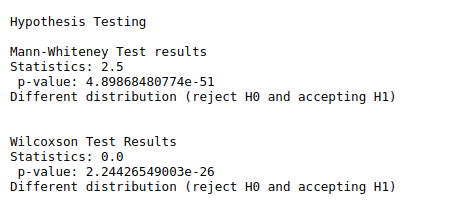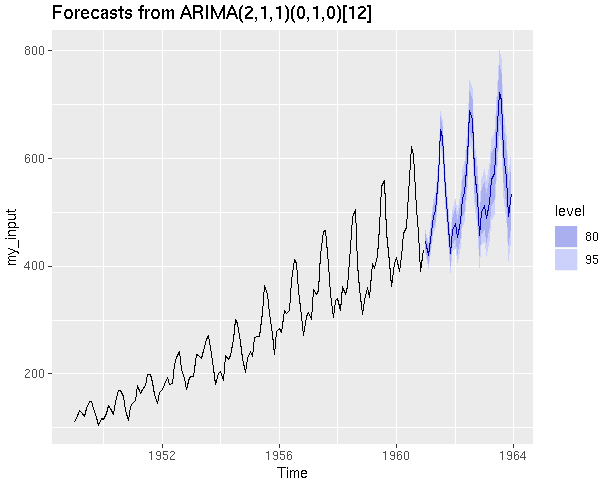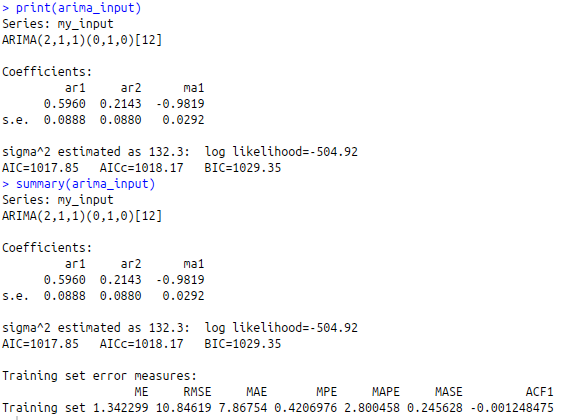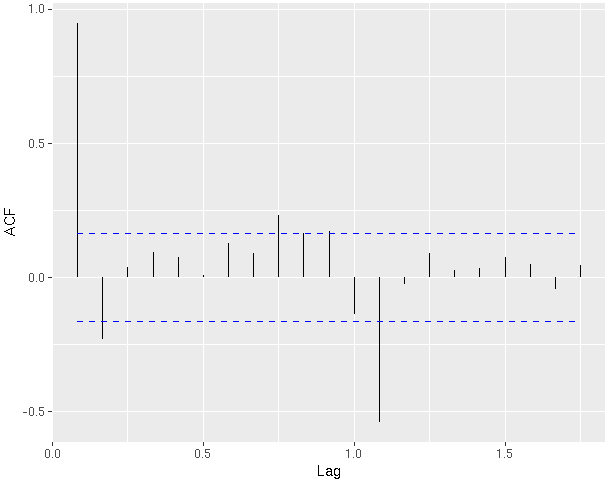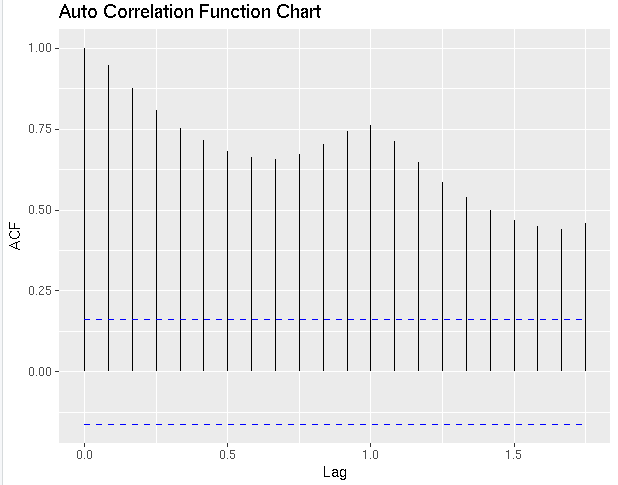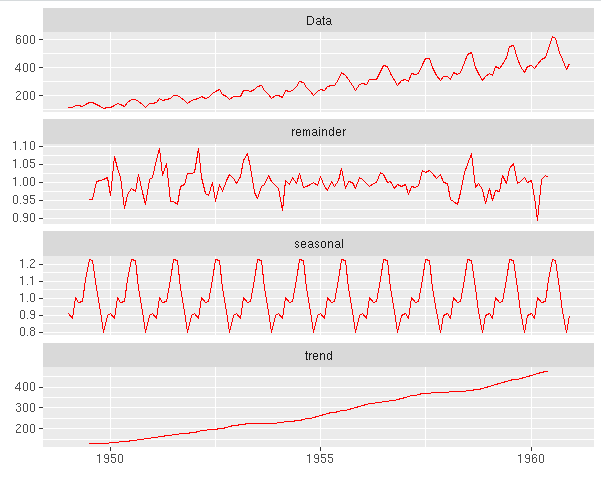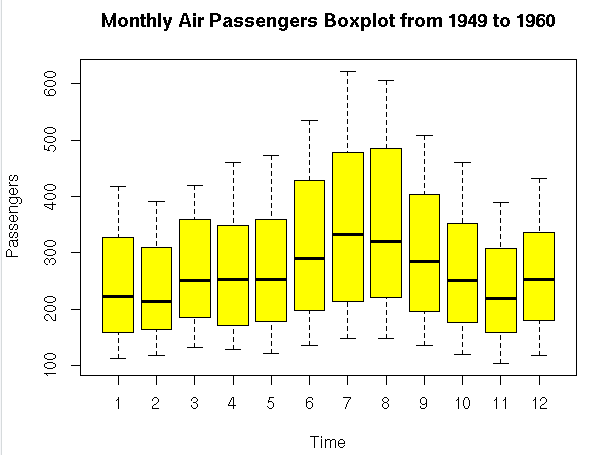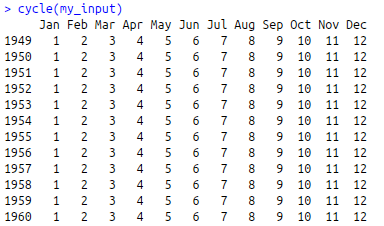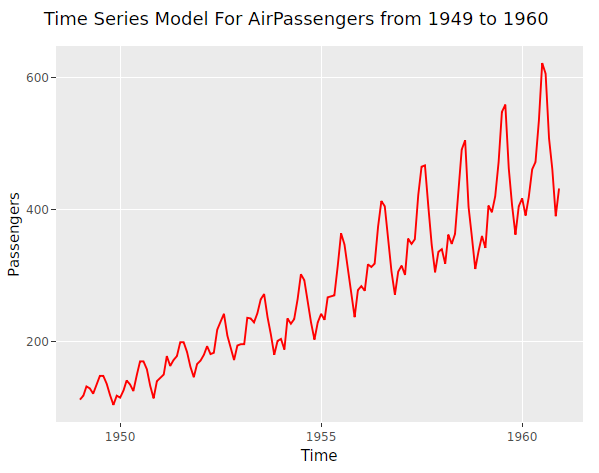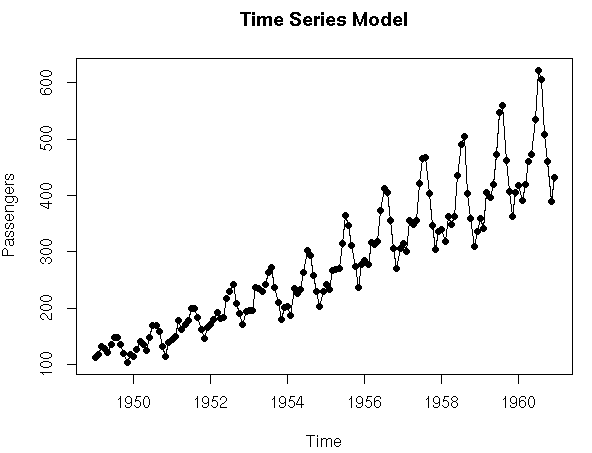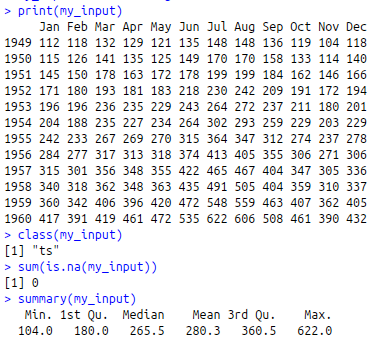To implement Time Series Modeling and Forecasting for the R inbuilt dataset AirPassengers using R.
type – Addictive, Multiplicative which is the seasonal component
H0: Time Series object is not stationary
H1 : Time Series object is stationary
#Import Data
my_input<-AirPassengers
print(my_input)
class(my_input)
#Check for Missing Values
sum(is.na(my_input))
#Summary
summary(my_input)
#Plot Time Series
plot(my_input,ylab=”Passengers”,main=”Time Series Model”,type=”o”,pch=19,cex=0.8)
#Plotting using ggplot2 to see the trend
#install.packages(“ggfortify”)
library(“ggfortify”)
gb<-autoplot(my_input,fill=”red”) + labs(title=”Time Series Model For AirPassengers from 1949 to 1960″,x=”Time”,y=”Passengers”)
#install.packages(“plotly”)
library(“plotly”)
ggplotly(gb)
#Box Plot to see Seasonal Effects
cycle(my_input)
boxplot(my_input~cycle(my_input),xlab=”Time”,ylab=”Passengers”,main=”Monthly Air Passengers Boxplot from 1949 to 1960″,col=”yellow”)
#Decompose the Time Series
decom_time<-decompose(my_input,type=”multiplicative”)
autoplot(decom_time,fill=”red”)
#Test Stationarity of the Time Series
#Using Augmented Dickey- Fuller test
#install.packages(“tseries”)
library(“tseries”)
adf.test(my_input)
#Using ACF chart
autoplot(acf(my_input)) + labs(title=”Auto Correlation Function Chart”)
autoplot(pacf(my_input))
#Fit a time Series model
#ARIMA model
#install.packages(“forecast”)
library(“forecast”)
arima_input<-auto.arima(my_input)
print(arima_input)
summary(arima_input)
#Calculate Forecasts
fore_input<-forecast(arima_input,h=36,level = c(80,95))
autoplot(fore_input)
